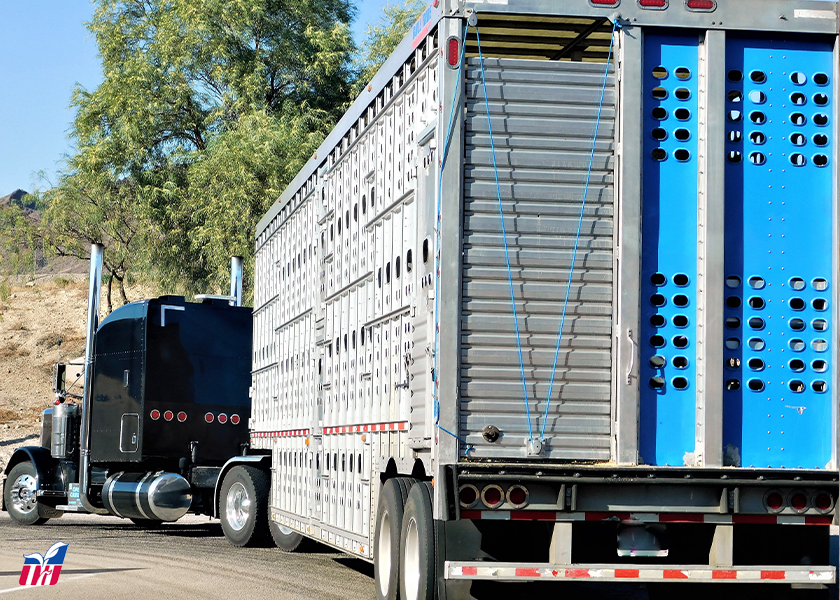Livestock Analysis | June 20, 2023

Price action: Nearby July lean hog futures surged $3.00 to $95.85 Tuesday, while most-active August gained $2.525 to $93.20.
Fundamental analysis: Traders are anticipating sustained seasonal strength over the short run. For example, the CME lean hog index is continuing to rise, but today’s futures gains increased their premiums to the cash equivalent prices. As expected, the hog index for last Thursday, reached $87.65 and Friday’s quote rose 57 cents to $88.21. Monday’s preliminary figure added another 54 cents, reaching $88.75. Thus, today’s futures advance put the July future about $7.00 over the latest spot quote.
Bulls were probably encouraged by Monday’s $3.73 jump in pork cutout to $96.06, whereas their bullishness was likely mitigated by the $1.35 drop to $94.71 posted at midsession today. We still think this reflects general expectations for grocers to become more active in featuring pork in the coming weeks, especially with choice beef cutout reaching its third highest all-time level last week. Cattle and beef prices seem likely to suffer continued seasonal weakness, but we suspect the beef/pork relationship has passed a tipping point, with the situation now favoring hogs and pork.
Technical analysis: With the August hog contract having posted a daily gain for the seventh consecutive session, bulls are firmly in command of the short-term technical situation. Today’s high-range close just under the high at $93.375 implies initial resistance at the latter level is tentative. A follow-through rise would likely have bulls targeting the April 28 high of $94.95 and psychological resistance at the $95.00 level. A breakout from that point would have bulls targeting the $100.00 level. Initial support at today’s low of $91.05 is backed by the psychological $90.00 level, then the June 14 low of $87.975 and by the 40-day moving average near $86.08.
What to do: Carry all risk in the cash market for now.
Hedgers: Carry all risk in the cash market for now.
Feed needs: You are hand-to-mouth on all corn-for-feed and soymeal needs at this time.
Price action: Expiring June live cattle futures slid $1.225 to $177.125 at Tuesday’s close, while most-active August futures dropped $2.025 to $169.70. August feeder futures dove $2.775 to $232.15.
Fundamental analysis: Cash and wholesale conditions seem to favor continued weakness across the cattle and beef complex. Last week’s five-area average proved surprisingly weak, falling $3.83 from the week prior to $184.92. Choice beef cutout slipped Monday and followed through to the downside today. It fell $1.31 to $338.83 at noon, thereby marking a drop of almost $5.00 from last week’s high. History suggests grocer demand at the wholesale level will remain firm through noon tomorrow, with prices becoming increasingly vulnerable to seasonal weakness from that point. That seemingly bodes ill for short-term cash and futures prices as well. On the other hand, our study of similar years when the cash cattle market tops prior first-half highs in June suggests the cattle market has a tendency to move even higher later in the year, so those in the cattle/beef industry should keep a close eye on developments in the coming weeks and months.
The fed cattle losses in the country and in the futures markets translated into sizeable feeder losses as well. Mixed action in the grain and soy markets may have exerted little net influence over yearling prices. The feeder index has seemingly stalled around $227.68.
Technical analysis: Today’s low-range August cattle futures close at $169.05 suggests the short-term technical advantage is shifting toward the bears. That is, the close below the psychological $170.00 level, as well as the 20-day moving average near $169.85 have made those the range for initial resistance. A close above that area would have bulls targeting resistance between today’s high of $171.975 and the 10-day moving average near $172.32. Look for added resistance at last week’s high of $174.40. Bears are likely targeting initial support at the May 31 high of $167.75, then the 40-day moving average near $165.97.
Today’s action also seemed to give bears the short-term technical advantage in August feeder futures, especially with the close at $232.175 flipping former support at the 40-day moving average near $233.01 to initial resistance. That is likely backed by last Friday’s high of $236.50, then the intersection of the contract’s 10- and 20-day moving averages near $237.60. The weak close opened the door to a test of likely support around the psychological $230.00 level, with a drop through that point having bears looking to challenge support in the $226.60 area.
What to do: Carry all risk in the cash market for now.
Hedgers: Carry all risk in the cash market for now.
Feed needs: You are hand-to-mouth on corn-for-feed and soybean meal coverage.






